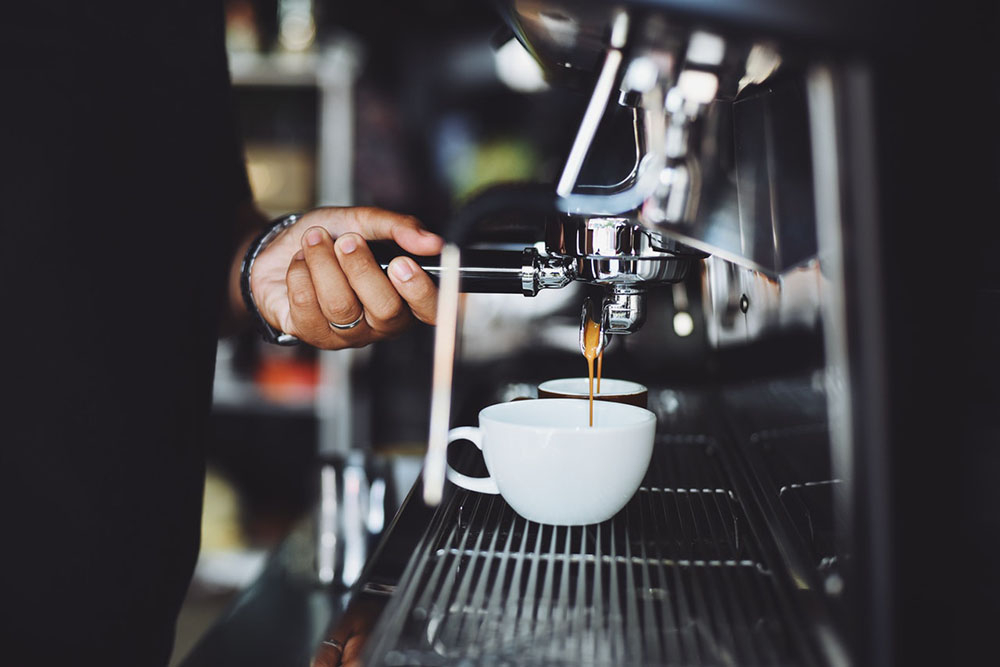
Imagine getting into your car, pulling out of the driveway and heading out on the road with no destination. You may hit a few dead ends along the way. You may get lost. You may find yourself in place you didn't want to be.
This is exactly what happens if you try to start a business without a plan.
When you get in your car, you usually have a destination in mind and a route to get there. In commerce, your business plan acts as your GPS and roadmap, guiding you to your destination (success).
You, too, will need a business plan for your coffee shop.

Creating a Coffee Shop Business Plan
Creating a business plan is one of the first serious steps you'll take towards bringing your coffee shop to life.
Not sure how to start a coffee shop business plan? Don't worry – we are here to help. We'll dive into more details shortly, but your plan should cover:
-
What your business is
-
How it will make money
-
An analysis of the competition
-
Who your customer base is
-
How you will grow your business
Your business plan should also include strategies you'll use to solve problems and achieve your goals.
A detailed, long-form business plan is required if you plan on getting a loan from the bank.
Here's what a successful business plan should include:
Executive Summary
When starting a coffee shop business plan, you'll want to begin with the executive summary.
The executive summary contains three subsections: Objectives, Keys to Success and Mission. The start of the summary should include a few paragraphs that summarizes what your business is, the demand for your business, it's location, start-up costs and expected growth and revenue.
I know that sounds like a lot of information to cram into a few paragraphs, but remember that you're not getting too detailed here. The goal is to briefly describe these key areas. But you do want to include facts and figures, like how many people drink coffee, the exact size of your shop, exactly how much you'll need to start your business and exact figures for your sales projections.
After these first few paragraphs, you'll want to include the three subsections:
Objectives
Here's where you'll list your main objectives for the year. Maybe your goal is to maintain a certain gross margin or to be named the best new coffee shop in town.
Whatever your first-year goals are, list them in this section. Be realistic about these goals.
Keys to Success
In this section, you will list the things that will make your shop succeed. Examples might include:
-
Marketing strategies that build a loyal local customer base
-
Store design that it visually attractive and efficient
-
Training employees to make the best possible coffee
These are the key most important things that will make your business succeed.
Mission
What is your coffee shop's mission? Do you want to create a unique space where people can hang out and socialize? Do you want to make the best cup of coffee in town?
This section is, essentially, your company's mission statement. Mission statements are an important part of launching a business, as they also provide you with direction and objectives. Take your time when writing this section.
Company Summary
In this section, you want to provide details about your company, including:
-
Name
-
Size of your store
-
Location
-
Investors
-
Start-up loss information
This section should also include a few sub-sections:
-
Company Ownership. Here's where you'll list the company's entity type, its place of operation, and owners (majority and minority).
-
Start-up Summary. Here's where you'll summarize your start-up expenses down to every last detail. Ideally, you want to create an itemized list of every expense associated with starting your company, including consulting fees, rent, insurance, licenses, permits, etc. It's important to be thorough here. Include charts and lists to outline all of your expenses. Banks will be paying close attention to this area.
-
Company Locations and Facilities. Here's where you'll talk about your shop's location, it's floor plan, and a brief description about its layout and look. If you want to be really thorough (which you should be), you can detail which areas will be designated for certain things (e.g. 1,300 square feet for the seating area and 700 square feet for the production area).
Products
In this section, you'll outline the products you plan to offer. Coffee is obviously on the menu, but do you plan to sell tea or other beverages? Do you want to offer food? Will you sell bags of coffee beans?
Will you have books and magazines for guests to read while drinking and/or eating?
All of these details should be included in this section of your business plan. You don't necessarily have to list the menu, but you should discuss what you plan to offer.
Market Analysis Summary
The market analysis section essentially discusses the need for your coffee shop. Your goal is to convince the reader that there is a hungry market for coffee (that's not a lie or an exaggeration), and that your coffee shop will fulfill that need.
A good market analysis will include:
-
Market Segmentation. Who is your target market? Teens? Adults? Office workers? All three?
-
Strategy. How will you appeal to your target market? Will your better-tasting, pour-over coffee appeal to the discerning tastes of college students and office workers?
-
Needs of the Market. What is the market looking for? How will you fulfill these needs?
-
Industry Analysis. What is the current state of the industry and what is its projected growth? What is the local market like? Who are your competitors and what are the buying patterns of local customers?
Strategy and Implementation Summary
How will your coffee shop turn a profit? In this section, you'll discuss how you'll maintain a competitive edge. What will you do differently that will attract customers?
You'll also include your:
-
Sales strategy
-
Sales forecast
Like the start-up expenses section, you want to be thorough and include every last detail. Let's say you expect $600,000 in sales the first year. How much of that figure will be attributed to coffee beverage sales? How much do you expect to make from the sale of coffee beans or food (if applicable)? You'll also want to include a list of the direct cost of sales.
Marketing Strategy Summary
A key important part of your business plan. In this section, you'll detail your strategies for attracting new customers and maintaining a loyal customer base.
Again, it's important to be thorough here and provide as much detail as possible. If you want to hand out fliers, list exactly how many you'll distribute. If your goal is to launch an online advertising campaign, detail where you'll advertise and how much you'll spend.
Management Summary
In this section, you'll discuss how your shop will be managed. You'll include a list of all founders, their experience in business and/or the industry, their investment, their role in the operation, and a very brief resume.
It also helps to include a personnel plan, which will list all of the employees you plan to hire. There's no need to list employee names, just positions. Be sure to include your projected pay for these employees.

Coffee Shop Business Plan Financials
The financial section is one of the most important in your business plan, which is why we've included it in a separate section.
This is where things get complicated and technical. You'll probably spend a significant amount of time on this section, but it's crucial to have all of your facts and figures in order. Accuracy is paramount here.
Here are a few things you want to cover:
-
Break-even Analysis. How much do you need to make each month to break even?
-
Projected Profit and Loss.
-
Projected Cash Flow.
-
Projected Balance Sheet.
-
Business Ratios.
You might consider working with an accountant when creating this section.
Banks will be paying most attention to this section and your start-up costs.
If you don't plan on asking for a loan, your business plan may not be quite as thorough in the financials department, although it should be for your own reference.
If you want to know how to start a coffee shop with no money, you might consider setting up a stand at a farmer's market or inside of an established business. But even when going these routes, you'll still need at least a little bit of money to get up and running.

Insuring Your Coffee Shop
Along with a business plan, you'll also need a strategy for insurance. If you're really serious about getting up and running, you may even buy a policy.
Your insurance policy should include:
-
Business income coverage
-
General liability insurance
-
Equipment coverage (machines can and do break down)
Having adequate insurance will protect your business and save you from having to pay for damages or repairs out of pocket. Before buying a policy, you may consider talking to an insurance agent who has experience with coffee shops and knows their needs. This way, you can ensure that you obtain all of the coverage you need to protect your business.
Learn more on how to open a coffee shop:
- Starting A Coffee Shop. Step 1: Choose Your Concept
- Starting A Coffee Shop. Step 3: Budget - Expenses Vs Profits
- Starting A Coffee Shop. Step 4: Find The Right Spot For Your Shop
- Starting A Coffee Shop. Step 5: Supplies And Equipment
- Starting A Coffee Shop. Step 6: Local Regulations And Licenses
- Starting A Coffee Shop. Step 7: Hire The Right Staff
- Starting A Coffee Shop. Step 8: The Menu And Food Safety Issues
- Starting A Coffee Shop. Step 9: Marketing And Promotion
Commercial Equipment: Quote and Advice
Get professional advice and estimates on the necessary equipment as well as a list of supplies needed to start a restaurant.
Richard
tel: 718-369-0600
richard@mcdonaldpaper.com


